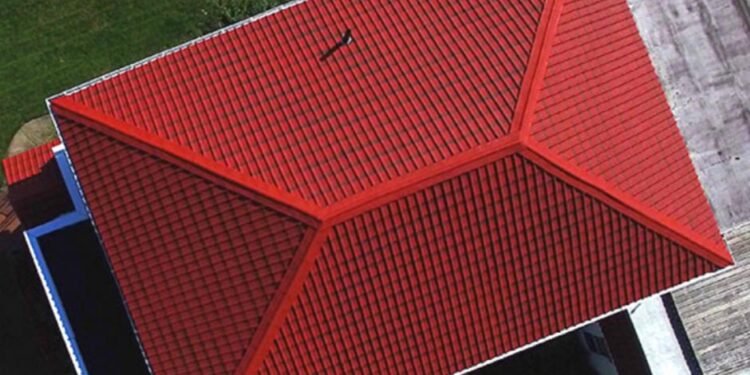Key aspects to consider when designing a roof
1. Climate and Weather Conditions:
The local climate and weather conditions play a significant role in roof design. The roof must protect against rain, snow, wind, and temperature extremes. A steeply pitched roof may be necessary in regions with heavy rainfall to facilitate efficient water drainage. Conversely, areas with heavy snowfall may benefit from roofs designed to defy snow loads. Understanding your region’s climate and weather patterns is essential for selecting appropriate roofing materials and designs that can withstand environmental challenges.
2. Architectural Style and Aesthetics:
The architectural style of the building greatly influences roof design. The roof should harmonize with the overall aesthetic vision of the structure. For example, a traditional colonial-style home typically features a gable roof, while a modern, minimalist design may favor a flat or shed roof. Consider the lines, angles, and materials that best complement the architectural style to achieve a cohesive and visually appealing design.
3. Roof Pitch and Shape:
The pitch and shape of the roof impact both aesthetics and functionality. Roof pitch refers to the steepness or slope of the roof. Steeper pitches are better suited for shedding water and snow, while shallower pitches may be chosen for their visual appeal. Roof shape options include gable, hip, flat, shed, and gambrel. Each shape has its advantages and drawbacks in terms of aesthetics, space utilization, and drainage capabilities. The roof pitch and shape choice should align with the building’s style, local climate, and intended use.
4. Roofing Materials:
Roofing materials significantly influence the roof’s longevity, energy efficiency, and maintenance requirements. Common roofing materials include asphalt shingles, metal, wood shakes, clay tiles, and slate. Each material has distinguishable characteristics in terms of durability, insulation properties, weight, and cost. Consider the lifespan of the chosen material and its compatibility with the architectural style and local climate. Additionally, select materials that meet local building codes and energy efficiency standards.
5. Insulation and Energy Efficiency:
Roof design can immensely impact a building’s energy efficiency. Proper insulation is essential to regulate indoor temperatures, reduce heating and cooling costs, and minimize environmental impact. Evaluate the insulation materials and techniques that align with your climate and local building codes. Additionally, explore cool roofing options that reflect more sunlight and absorb less heat, reducing the need for air conditioning.
6. Roof Ventilation:
Adequate roof ventilation is crucial to stem moisture buildup and maintain a healthy indoor environment. Proper ventilation can extend the lifespan of roofing materials and reduce the risk of mold and mildew growth in attic spaces. Evaluate ventilation options such as ridge vents, soffit vents, and gable vents to ensure that your roof design promotes air circulation and moisture control.
7. Budget and Cost Considerations:
Roof design must align with the budget for the construction or renovation project. Roofing materials, complex designs, and additional features like skylights or dormers can significantly impact costs. Establish a realistic budget and work with a qualified architect or designer to balance your design aspirations with financial constraints. Consider long-term savings from energy-efficient roofing materials and insulation when making budget decisions.
8. Local Building Codes and Regulations:
Compliance with local building codes and regulations is essential to ensure your roof design meets safety and legal standards. Building codes may dictate factors such as wind resistance, fire resistance, load-bearing capacity, and insulation requirements. Consult with local authorities or building professionals to understand the specific codes and permits needed for your project.
9. Maintenance and Lifespan:
Factor in the long-term maintenance requirements and expected lifespan of your chosen roof design and materials. Some roofing materials may demand more frequent inspections, repairs, or replacements. Consider the ease of access for maintenance tasks and select roofing materials that propose durability and longevity. Regular maintenance can extend the life of your roof and reduce overall costs.
Designing a roof is a multifaceted process that requires a thoughtful approach to aesthetics, functionality, and practicality. By reckoning factors such as climate, architectural style, roof pitch, roofing materials, structural integrity, insulation, ventilation, budget, local regulations, and maintenance needs, you can create a roof design that enhances the beauty and functionality of your building while ensuring durability and energy efficiency. Collaboration with experienced architects, designers, and roofing contractors in Tulsa is paramount to achieving a successful roof design that meets your specific needs and complements the overall vision of your project.













